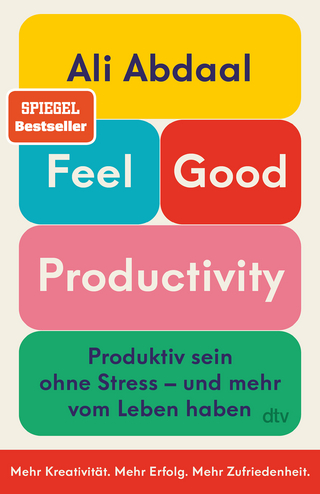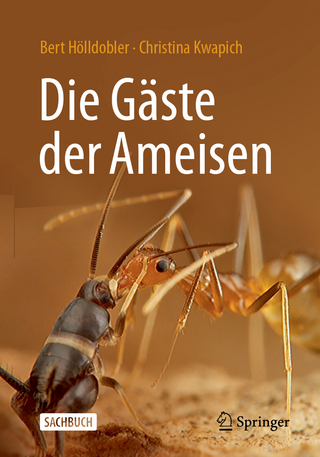
Being a Scientist
University of Toronto Press (Verlag)
978-1-4875-8844-1 (ISBN)
Being a Scientist is a comprehensive introduction to the many aspects of scientific life beyond the classroom and laboratory. Written with undergraduate science majors in mind, the book covers ethics, the philosophical bases of scientific methods, library research, reading, peer review, creativity, proposal and paper writing, and oral and poster presentations.
In contrast to other texts in the field, which often take a simple prescriptive approach to these topics, Being a Scientist connects them to the historical and philosophical roots of modern science, as well as the common experiences of all people.
Written in a conversational style, the book makes use of metaphor, historical anecdote, and hypothetical research about everyday household questions. This approach helps undergraduates learn basic research skills without being too intimidated by the advanced concepts, vocabulary, and methods which are encountered in looking at the current scientific literature.
Being a Scientist is a textbook for a semester-long course devoted to teaching research and communication skills to undergraduate science majors, but it can be adapted for use in summer research experiences, capstone research courses, and other courses throughout the undergraduate curriculum.
Michael H. Schmidt is a professor in the Department of Chemistry and Biochemistry at California State University, San Marcos.
List of Figures and Tables
Preface
Introduction
The Organization and Use of the Book
To Instructors
To Students
Acknowledgments
Part I: Thinking, and Behaving, Like a Good Scientist
1. What Does It Mean to Be a Scientist?
1.1 Why Become a Scientist?
1.2 Scientists Are Humans
1.3 Defining Science, and Scientists, More Precisely
1.4 Aristotle, Medieval Scholasticism, and Deduction
1.5 Francis Bacon and Induction
1.6 Hume and the Problems with Induction
1.7 William Whewell and Hypotheses
1.8 Dealing with Doubts about Induction: Popper
1.9 Holistic Views: Duhem, Kuhn, Latour, and Ziman
1.10 Is There a Conclusion?
2. What Should We Do, and Why? The Questions of Ethics
2.1 Why Study Ethics?
2.2 Systems of Ethics
2.3 Consequentialism and Utilitarianism
2.4 Social Contractarianism
2.5 Deontology
2.6 Virtue
2.7 Ethics of Care
2.8 Using Different Approaches to Ethics
2.9 Ethics in Practice
2.10 About Moral Courage
2.11 The Ethics of Science
2.12 The Importance of Honesty
2.13 The Ethos of Science
2.14 The Context of Science
2.15 Resources for Scientific Research
2.16 Ethical Conflicts
Part II: Standing on the Shoulders of Giants
3. The Scientific Literature: An Overview of the Terrain, and a Brief Hike In
3.1 History, Metaphors, and Literature
3.2 Subramanyam’s Cycle
3.3 Approaching the Landscape
3.4 Kinds of Books
3.5 A Plan
3.6 Finding Books and Reference Works
4. Scientific Journals, Past and Present
4.1 The History of Scientific Literature
4.2 Did Modern Science Start with Gutenberg?
4.3 The Rise of Scientific Journals
4.4 The Evolution of the Scientific Journal and the Scientific Article: The Eighteenth to the Twentieth Centuries
4.5 What Can Be Found in Scientific Journals Today?
4.6 What about the Future?
4.7 Climbing into the Journal Literature
4.8 What’s in a Name?
5. Abstracts Collections and Databases
5.1 A Brief History of Abstracting and Indexing
5.2 Investigating Databases
5.3 Implementing a Search
6. Using Cited References: Backward and Forward
6.1 The Importance of Cited References
6.2 Looking Backward
6.3 The Limitations of Looking Backward, and the Need to Look Forward
7. Reading a Scientific Paper
7.1 Why Is It So Hard?
7.2 Hints for Taking a First Look at a Scientific Paper
7.3 Reading for Arguments
7.4 Local Arguments and Larger Arguments
7.5 Thinking beyond the Paper
8. Peer Review
8.1 Benefits and Limitations
8.2 Historical Background
8.3 Modern Peer Review in Practice
8.4 Some Problems with Peer Review, and Some Possible Solutions
Part III: Planning, Documenting, and Presenting Science
9. Starting Research: A Different "What Should We Do?" Question
9.1 The Importance of Creativity
9.2 Divergent Thinking on a Big Scale
9.3 Divergent Thinking in a Narrower, More Advanced Context
9.4 Convergent Thinking
9.5 Visualization
9.6 Situating Your Research: The Scientific Literature
10. Refining Research Ideas and Writing a Proposal
10.1 From Ideas to a Proposal
10.2 Practical Quantitation
10.3 Using Quantitative Data
10.4 What about Statistics?
10.5 Anticipating Problems
10.6 Writing the Proposal
11. The Laboratory Notebook
11.1 The Evolution and Importance of the Laboratory Notebook
11.2 The Format of a Notebook Entry
11.3 The Laboratory Notebook in Real Life
11.4 Electronic Laboratory Notebooks
12. Scientific Writing: Grammar and Style
12.1 Tense and Voice
12.2 General Writing and Style Suggestions
12.3 A Quick Guide to Tense and Voice
13. Assembling and Writing a Scientific Paper
13.1 Some Perspective
13.2 Authorship
13.3 Starting with the Results
13.4 Distinguishing the Results and Discussion
13.5 Results, Selected and Presented
13.6 Writing about the Results
13.7 Methods
13.8 Discussion
13.9 How about a Conclusions Section?
13.10 Introduction
13.11 Abstract
13.12 Title
13.13 Putting It All Together
14. Oral and Poster Presentations
14.1 Historical Perspective
14.2 The Structure of Oral Presentations of Research
14.3 Visual Aids
14.4 How Much Text?
14.5 Tables and Figures for Presentations
14.6 Slide Style
14.7 Talking the Talk
14.8 Poster Presentations
14.9 Poster Graphics
14.10 Poster Layout and Display
14.11 Supporting Your Poster
15. Closing Thoughts
Notes
Index
| Erscheinungsdatum | 10.05.2021 |
|---|---|
| Zusatzinfo | 16 b&w illustrations |
| Verlagsort | Toronto |
| Sprache | englisch |
| Maße | 154 x 229 mm |
| Gewicht | 450 g |
| Themenwelt | Naturwissenschaften ► Biologie ► Humanbiologie |
| Naturwissenschaften ► Geowissenschaften ► Geografie / Kartografie | |
| Sozialwissenschaften ► Pädagogik | |
| ISBN-10 | 1-4875-8844-5 / 1487588445 |
| ISBN-13 | 978-1-4875-8844-1 / 9781487588441 |
| Zustand | Neuware |
| Haben Sie eine Frage zum Produkt? |
aus dem Bereich


